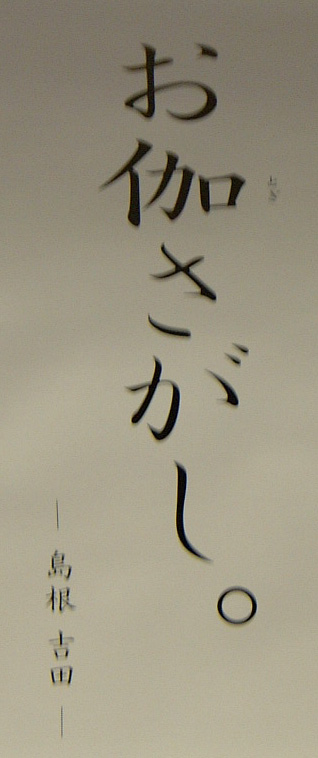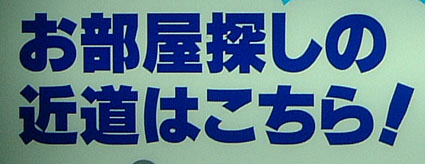O-togi-sagashiO-togi-sagashi is the slogan that Shimane prefecture is using for its travel campaign in 2003. It means 'Looking for old-style fairy tales'. O-togi is a native Japanese word for a traditional
fairy tale. O- is honorific in origin; togi
originally meant 'attending, keeping company'. The word has a comforting, old-fashioned
feeling about it, redolent of being told fairy tales in the nursery. In Chinese
characters it is written Sagashi is from the verb sagasu,
meaning 'to seek' or 'to search for'. Sagashi can
be written several ways in Chinese characters, the difference among them being
one of nuance rather than fundamental meaning. Shimane prefecture is one of the most rural and least industrialised prefectures in Japan, lending it a nostalgic charm that is deftly exploited by this campaign slogan.
What is interesting is the way the word o-togi-sagashi is represented in this advertisement. First, notice the black-on-white printing, reminiscent of traditional Japanese brushwork. The font chosen is simple and graceful, slender and gently curved -- anything but thick and boxy. Then notice how the word o-togi is rendered, in
Chinese characters. The character Finally, notice how the word But the use of hiragana in this case is undoubtedly a conscious decision.
Were sagashi written in Chinese characters, as
This poster demonstrates more clearly than many the great care and attention that goes into choosing the most appropriate way of writing words and expressions in Japanese. For reference, some examples where kanji are used to write
The following are the results of a Google search for the words otogi and sagashi during August 2003. O-togi
-Sagashi
| |||||||||||||||||||||
| Previous Next |


